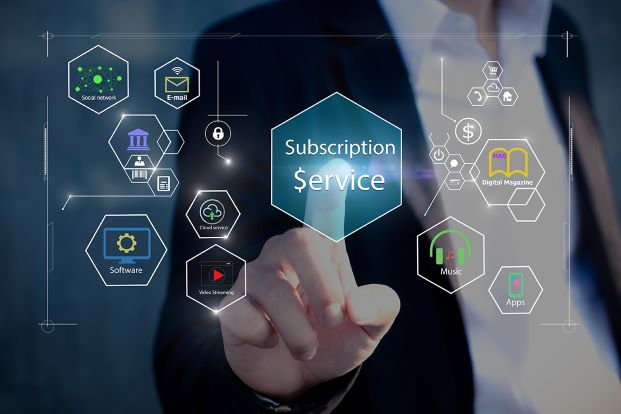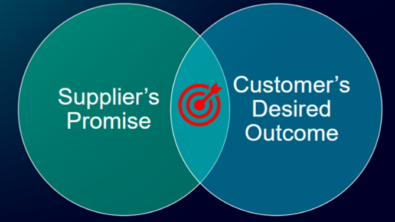The World as a Service

Subscription and consumption model history
Pay-as-you-go is not new. We live and breathe in a world as a service more than we realize long before software as a service (SaaS) was introduced.
In 2002, IBM Global Services (GBS) acquired Price Waterhouse Consulting (PwC). PwC organized GBS by vertical industries and horizontal practices (e.g., strategy, CRM, supply chain, etc.) as part of the integration effort. For example, the communications sector – strategy and change practice included the telecommunications, media and entertainment, and energy and utility industries.
Why are these three industries grouped together? Because they share the same subscription and consumption-based business model. Think about how our bills are calculated based on our consumption and usage for phones, cable TV, and utilities. We don’t buy these resources upfront or own them; we pay for what we use.
Cloud operating model and benefits to customers
Interestingly enough, when Microsoft started its cloud online services business unit, it leveraged the telecommunication operating model to operationalize its business. The telecom operating model is essentially the cloud operating model.
SaaS and cloud have introduced a paradigm shift of power from vendors to customers. In the on-premise model, vendors’ salesforce focuses more on closing new deals. In the subscriptions model, vendors also focus on adoption, expansion, and renewals, typically driven by customer consumption.
From a deployment perspective, software as a service provides updates more frequently with minimum effort or involvement from the customer. This model offers an improvement and benefit brought by the service-oriented architecture whereby customizations automatically integrate into new release deployment over the internet. What used to be a lengthy process to update a software package can be accomplished in a few minutes.
One common question that customers raise about moving to the cloud is security. They are concerned about the vulnerability of their data hosted in the public cloud. This is a misperception as data centers and infrastructure in the public cloud environment have more rigorous processes and higher standards than individual on-premises IT operations. The cloud data centers also have dedicated professionals who monitor the network activities 24 x 7. That said, security in the cloud exists in multiple layers and contexts: infrastructure, platform, and software. Vendors at different layers have the responsibility in their domain.
Reinvent yourself
What does the shift to the cloud mean to channel partners? As customers become more empowered in their purchasing decisions, software deploys faster, and the revenue model shifts from licensed to subscriptions, what can a partner do to continue providing value? For partners who want to stay in business for the long term, business and service model changes are inevitable.
Partners should re-examine their customers’ past spending and look to transform some service offerings to subscription-based. Aligning subscription-based services with software renewals allows for a quicker, more straightforward approval process. For example, offer training and education as a service in a subscription model the way Udemy and Acloud.guru do very successfully.
The subscription model offers several benefits:
- provides a steadier revenue stream for the host
- encourages continuous learning by the end-customer
- increases the knowledge and adoption rate of the subject area
- provides insights to enhance its future offerings
While subscription-based services provide the potential for recurring revenue, there are challenges that traditional channel partners must overcome. As with any subscription-based product, the customer must see value in the product that is up for renewal. Partners – or any company really – must better understand customers’ needs and regularly update service offerings to meet customer expectations. Then, one can build a robust subscription-based service with minimal churn.
Start to pay attention to how many business models are moving to subscription models in the B2B and B2C world, and new ideas will start coming. Welcome to the world of as-a-service.
Don’t just take our word for it, listen to analysts Jim Brown of Tech-Clarity and Monica Schnitger of the Schnitger Group discuss the benefits of cloud adoption and software-as-service (SaaS).
Dinah Peng is a Director at Siemens Digital Industries Software, focusing on the SaaS/Cloud ecosystem. She has 30 years of industry experience working in various roles, including management consulting, solution sales, GSI partner enablement, and key accounts sales.
Scott Dibben is a Global Partner Development Executive at Siemens Digital Industries Software focusing on partner service enablement. He has 15 years of industry experience along with 10 years of channel experience where he helped significant design and manufacturing companies plan and adopt new technology.
Comments
Leave a Reply
You must be logged in to post a comment.



Excellent post and very timely advice — the shift to a subscription model will be the defining strategic dynamic to affect the B2B software industry in 2021 and beyond. The evidence is clear: customers prefer to adopt via subscription … and subscription businesses are more profitable, more scalable, and more forecastable than transactional businesses. But just because the need to transition is obvious and compelling does not mean the shift will be easy.
As you point out, a subscription business provides many benefits to the customer and to the solution provider (and the software vendor), but only if the solution provider is able to embrace the principles of “land and expand” and “customer success.” Without these two elements, a subscription is just a temporary, low-revenue, high-risk business model.
While the primary focus regarding the transition to subscriptions is on the financial / cash flow impact (swallowing the fish), the key to success is based on 2 elements: 1) adapting the sales engine to deliver fast, incremental engagements & expansion; and 2) building a services capability for post-sales adoption & delivering measurable business outcomes. Subscriptions are a different financial model, but they are also a different sales + services model.
Through this lens it’s possible to see the path forward: define sales roles, focus on customer training & adoption, demonstrate specific use cases, actively pursue new decision makers in key accounts, deliver software functionality through professional services, and document successful outcomes. Sounds simple! But of course it isn’t … and neither is it fast. For an established business to alter their existing legacy business model to a subscription model will take multiple years, yet require immediate investments.
This is why the focus on incremental change, rapid progress, and agile project management are absolutely vital. We can all see the change that needs to be made, and we all agree on the reasons why … but few have actually begun the process of change. Given the effort that will be required and the time it will take to make the change, the time to begin is right now. Siemens and its Solution Partners are in this together because the change is in the best interest of both players — but only if both sides work together to make this happen.
Also – extremely valuable point re: data security. As we can all see in the headlines, security is more urgent and complex than ever … and hosted solutions in world-class datacenter with enterprise-level security will be a massive benefit to the entire software industry as well as all of our clients. Though customers may initially resist the idea of putting their data into the cloud they will quickly recognize the dramatic value of better security practices that are monitored and managed by security specialists vs. the local security resources they may have access to. While engineering software is the focus of the business for Siemens and its Solution Partner, security must be front-and-center in the conversation.